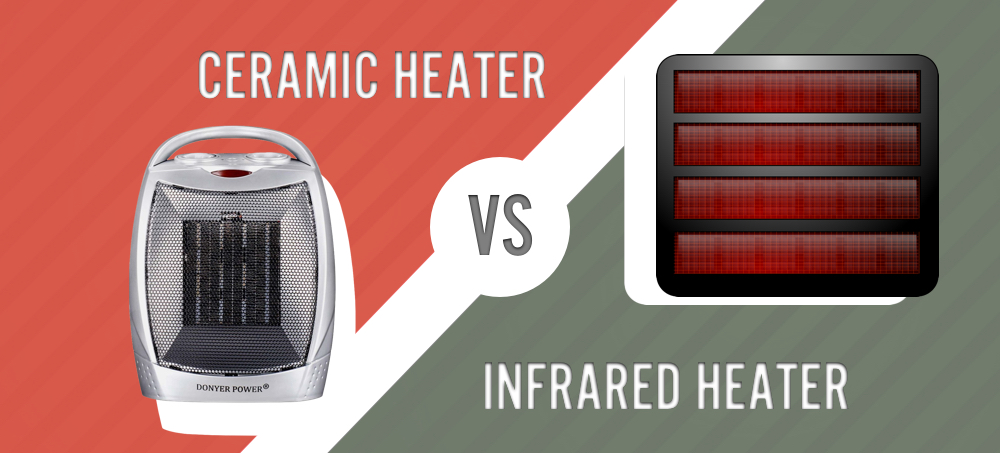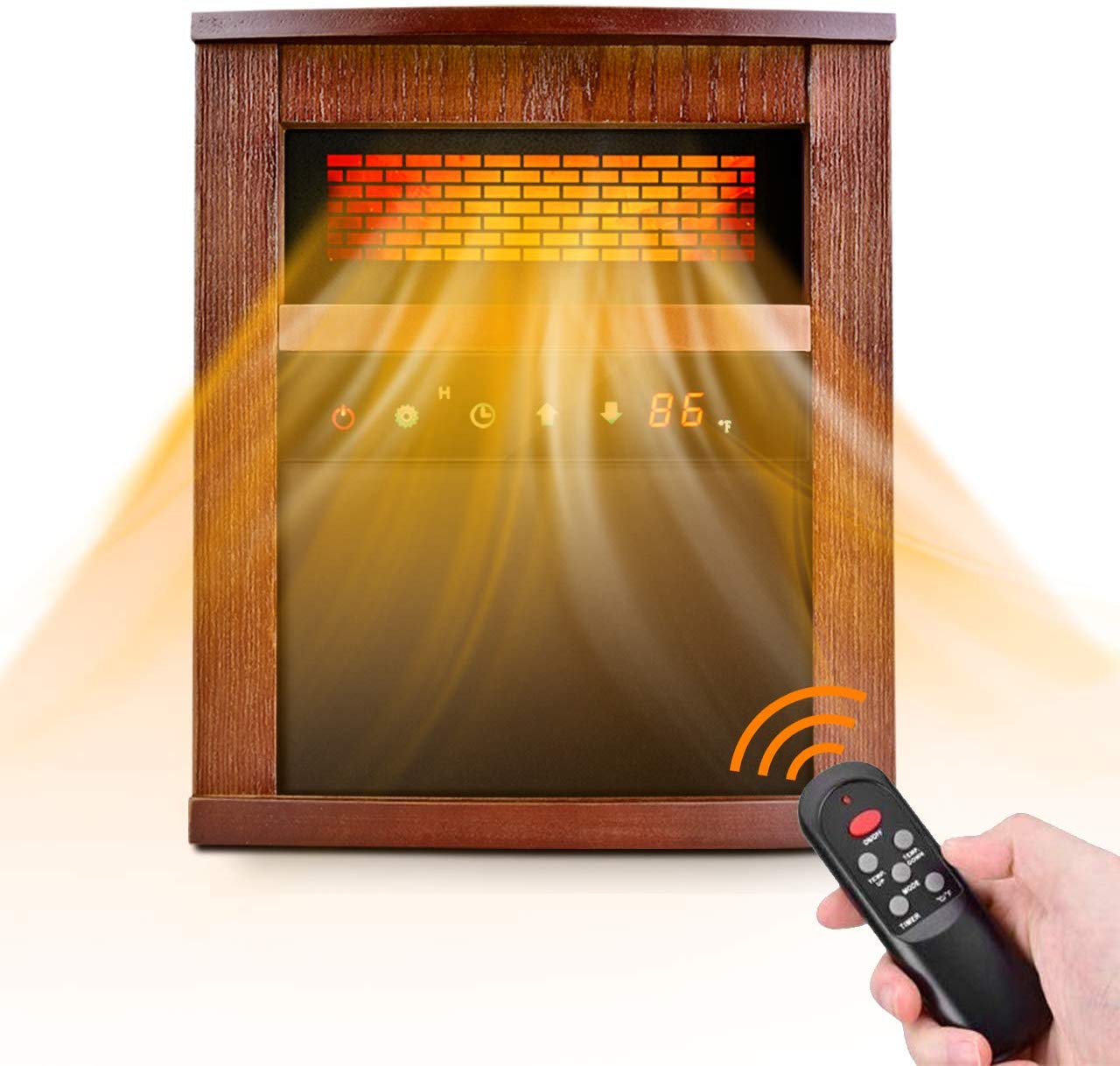Ceramic vs. Infrared Heater: What’s the Difference?
Last Updated on December 11, 2021
 You have choices when it comes to your space heater. Most specifically, you will find yourself choosing between ceramic and infrared space heaters.
You have choices when it comes to your space heater. Most specifically, you will find yourself choosing between ceramic and infrared space heaters.
Both units have their own pros and cons, but only one will be right for you. Read on for a guide to choosing between ceramic and infrared space heaters.

Ceramic Space Heater Image Credits: DONYER POWER, Amazon
What is Ceramic?
Ceramic units tend to be very simple, featuring a heating element and a fan to disperse the hot air. They do not directly heat your skin, but instead increase the temperature of the space around you, leading to a warmer environment over time.
Because of this, it can take a long time for ceramic systems to take effect. However, the heat that they produce may stay in the air longer, making the machine somewhat energy efficient.
Because ceramic units make use of fans, they tend to run very loudly (though the extent to which this is the case can vary quite a lot from unit to unit).
Ceramic space heaters ultimately best serve users with larger spaces to heat.
- Good for large spaces
- Heat may stay in room for some time
- Can be quite noisy
- Takes a long time to heat up a room

Infrared Heater, Image Credit: 1500W Infrared Heater, Amazon
What is Infrared?
Infrared heat is much like the heat of the sun. While most space heaters keep your house warm by increasing the temperature of the air around you, infrared takes a much more direct approach. The infrared beams produced by heaters of this variety that only people or objects that they make direct contact with.
The actual impact of the heating is felt much more substantially. However, the heating radius is significantly smaller. Unless you are in direct contact with the rays from the heater, you are not going to benefit from their effect.
Unlike ceramic heaters, infrared units do not typically implement a fan. As such, they tend to operate much quieter.
It is also worth noting that there has been some conjecture that infrared can promote skin cancer. Alarming though this thought may be, it is not scientifically substantiated. Any risks associated with infrared heating systems are equally present in exposure to the sun.
Infrared systems do tend to be more expensive than the ceramic alternative, but there are many exceptions to this.
- Heating is more effective when it makes contact
- Relatively small heating radius
- May be pricey
Which is Better?
As you may have realized, deciding between ceramic or infrared heaters is not really a matter of which is better. Both are good at what they do. You’ll ultimately decide between the two styles by examining your needs and purchasing accordingly.
Do you have a larger space that requires lots of heat? If so, you will probably be better served by the ceramic space heater. These units are the closest thing you will find to a traditional central heating unit.
However, if you are in closer quarters you may be better served by an infrared system. The heat is much more effective, and because it doesn’t have a fan, it tends to run quietly.
Now that you know all about these two systems, you can move forward on your buying decision with confidence!
